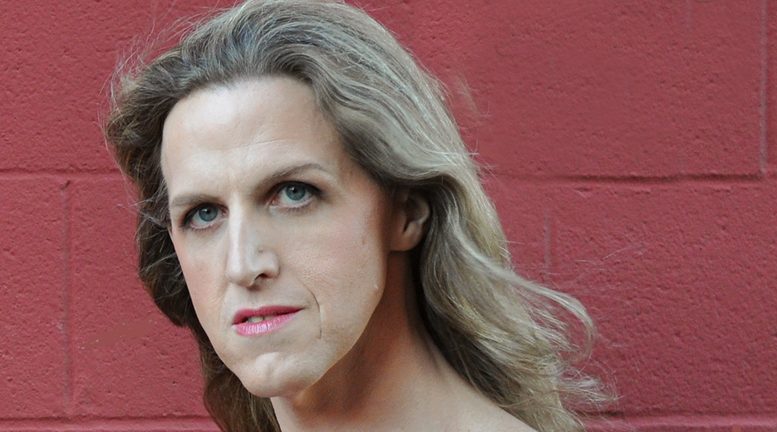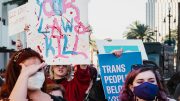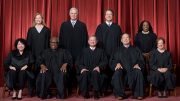By: Lorelei Erisis*/TRT Columnist—
Happy Pride season! Let’s talk about trans representation and presence (or lack thereof) in Pride parades and festivals. It’s a complicated and sensitive topic—so I’ll start with a few disclaimers before we dive in.
I’ve done my best, as always, to fairly represent the incredibly diverse trans community. This column draws on years of conversations with many diverse trans folks, but it’s still biased by my own point of view and experiences—as a trans person, and as a Pride attendee, marcher, and organizer. I’m a columnist, not a reporter.
The views and opinions in this column are mine, and not those of this newspaper, nor of any organization I represent or have represented previously.
As I write about Pride events—their strengths and their flaws—I want to recognize what it takes to create them. From working with Northampton (Noho) Pride, I know that Pride parades and festivals are labor-intensive and expensive, requiring long hours from hard-working volunteers.
Pride events also vary widely. Jami Shofner, a trans comic from Texas, notes: “In some places, Pride is very trans-inclusive and some are most definitely not, to the extent that alternative events have come into existence in order to actually be all-inclusive.”
So, first of all: I like Prides. I’ve marched in Prides all over the Northeast, and it’s always a good time. Rather than ride on floats, I prefer to march with my Miss Trans New England crown and sash, with my fist raised high and my voice loud and clear. I get to meet wonderful folks and spend time with old and new friends, many of whom I only see during Pride season. And I often hear that seeing me loud and proud at Pride made someone feel safe, welcomed, less alone, or inspired to start their own transition.
Prides are great for visibility, for having fun, and for creating safer spaces for LGBTQ people, especially youth, to come out and be themselves—even if only for the day. Jillian Graham from Connecticut shared: “Pride events, like rallies, have always been good for raising our spirits and giving us hope for change. As a young trans woman it was also an effective way to meet other trans folk … Many of the early pride events I participated in helped give me a [feeling] of community power.”
But on a less positive note, many trans people feel increasingly pushed out of Pride—an event that’s meant to include our whole LGBTQ+ rainbow—by cisgender (cis) gay men and, to a lesser extent, by cis lesbians. There’s a lot of evidence that the riots that inspired our modern Pride celebrations—from Stonewall, which the first NYC Pride March commemorated, to Compton’s Cafeteria, which predated Stonewall by a few years—were trans-led and trans-centered. This is a contentious topic and I don’t have space to go into it here, but the fact is that many trans people feel a sense of ownership over the genesis of Pride.
When trans people say that they feel marginalized or excluded from Pride, organizers often respond by encouraging them to volunteer or get involved in planning—but it can be hard to get involved, stay involved, and influence these often cis gay and lesbian-dominated organizations. When trans people do try to offer help or advice, they can find themselves ignored—and then organizers wonder why more trans people don’t get involved.
Pi Erised Fong, of Massachusetts, shared this example: “I was once chastised at a Pride for leading trans rights chants during the parade. I was told that I was too angry and that it was ruining the party atmosphere.”
Sometimes actions speak louder than words. Last year, trans people in Massachusetts fought long and hard for basic rights—yet at Boston Pride, the Massachusetts Transgender Political Coalition (MTPC) was almost at the very back of the parade. Achieving a historic success for trans rights didn’t keep us from being relegated to the end of the line. And in 2015, a group of local trans people issued a list of demands to Boston Pride and the larger LGBTQ community aimed at addressing inequalities for trans people and people of color. Two years later, we still haven’t seen significant, visible action.
What started as a protest has become a party, which in and of itself is not terrible. Pride has always had a celebratory aspect, and we deserve the right to celebrate our achievements, enjoy our community, and blow off some glittery steam—but the increasingly corporate culture of many Prides is a serious issue. Someone has to foot the bill for the event, but when trans people and other marginalized groups see more corporate banners than representation of their own identities and communities–it makes an impression.
When I march in Pride, I’m often one of a very few non-drag, visible trans people in the entire parade. I’ve heard from many trans people about the issue of drag visibility being elevated in Pride culture more than trans visibility.
Naomi Wixon, a trans woman from Massachusetts, sums this up nicely: “As a trans woman I really like Pride events and the community that comes with them. I’m also wary of them, and a lot of that comes down to drag performances.” She’s concerned that uninformed people at Pride may confuse trans women with drag queens, something that many trans women, including myself, have experienced. She notes, “Some friends of mine in the LGB community commented at a recent Pride that I was ‘Gettin’ my drag on’… I can understand the mistake … but I was still pretty offended. I’ve seen drag queens who mock femininity in ways I sometimes dislike or don’t agree with and I don’t want to be grouped in with them.”
And it’s not just about personal discomfort. Ben Power Alwin, founder and curator of the Sexual Minorities Archives in Holyoke, Massachusetts and a trans elder, shared a powerful critique: “Drag queens are always thrown up on stage to entertain everybody. I get sick of the main trans presence at Prides being entertainers. We are not their (cis LGBQ people) entertainment! That combined with woefully lacking actual activism for trans rights and trans lives …Where is the actual protest? Gays are being killed in Chechnya, trans women of color are being slain every other week, trans kids can’t use the appropriate restroom in their public schools, trans people cannot get employment …We are in need and yet the cis queers just whoop and holler at the drag queen performers.”
I believe that Pride is a vital part of our history and community, and is more positive than negative, but Prides nationwide are going in a direction that’s problematic for trans people and other marginalized LGBTQ+ groups. I hope that Pride organizers will listen carefully and start to make changes so that Pride continues to serve our whole community.
But if Pride continues to drift towards commercialism and away from protest, it may be time for something different. Let the old behemoths rebrand so the rest of us can take back Pride—the Ts, the Bs, the Qs, the Is, and others who are still fighting for equality. We can make Pride our own again: a Pride for the People.
Slàinte!
*Lorelei Erisis is an actor, activist, adventurer and pageant queen. Send your questions about trans issues, gender and sexuality to her at: askatranswoman@gmail.com.








Here in Boston, I think a lot of the trans presence has shifted to the Dyke March, an event that many of us perceive as more welcoming to our presence and more in alignment with our goals and beliefs.
Disclaimer: I’m one of the organizers of the March.